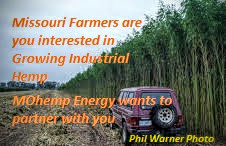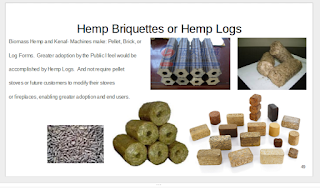The use of clean energy biomass has a potential to reduce the lifecycle pollution emissions by 77%–99% in comparison to fossil fuel coal combustion
Images, Infographics, Highlights added by Scotty to add life to the boring science paper.
 The use of biomass has a potential to reduce the life cycle GHG emissions by 77%–99% in
comparison to fossil fuel combustion, depending on the feedstock category and combustion technology
used
The use of biomass has a potential to reduce the life cycle GHG emissions by 77%–99% in
comparison to fossil fuel combustion, depending on the feedstock category and combustion technology
used
______________________________
Snippets of article on Green House Gas emissions with Biomass Feedstocks to Generate Electricity with and without Coal.
 |
| Biomass Hemp and Kenaf machines make Pellet, Brick, Log Forms |
Evaluation of the Life Cycle Greenhouse Gas Emissions from Different Biomass Feedstock used for Electricity Generation-source
A review of the biomass literature showed that there are wide-ranging types of biomass that may be utilized in generating electricity.
The numerous types of biomass may be classified into distinct categories depending on the type of feedstock. The Idaho National Laboratory Report provided an extensive classification of feedstock-based biomass that included seven distinct categories as follows:
• Agriculture residues (AR): includes dry lignocellulosic agriculture residues (straw, sugar beet leaves) and livestock waste (solid manure, liquid manure)
• Dedicated energy crops (DEC): includes dry lignocellulosic wood energy crops (small round wood (SRW)—willow, short rotation coppice (SRC)—poplar, eucalyptus), dry lignocellulosic herbaceous energy crops (miscanthus, switchgrass, common reed, reed canary grass, giant reed, cynara cardu, Indian shrub), oil energy crops (sugar beet, cane beet, sweet sorghum, Jerusalem artichoke, sugar millet), starch energy crops (wheat, potatoes, maize, barley, triticae, corn, amaranth), and other energy crops (flax (Linum), hemp (Cannabis), tobacco stems, aquatic plants (lipids from algae), cotton stalks, kenaf)
• Forestry (F): includes forestry byproducts (bark, wood blocks, wood chips from tops and branches, wood chips from thinning, logs from thinning)
• Industry (I): includes wood industry residues (industrial waste wood from sawmills/timber mills (bark, sawdust, wood chips, slabs, off-cuts)), food industry residues (wet cellulosic material (beet root tails), fats (used cooking oils), tallow, yellow grease, proteins (slaughterhouse waste)), and industrial products (pellets from sawdust and shavings, briquettes from sawdust and shavings, bio-oil (pyrolysis oil), ethanol, biodiesel)
• Parks and gardens (P-G): includes herbaceous (grass) and woody (pruning)
• Wastes (W): includes contaminated wastes (demolition wood, biodegradable, municipal waste, sewage sludge, landfill gas, sewage gas)
• Others (O): includes roadside hay (grass/hay) and husks/shells (almond, olive, walnut, palm pit, cacao) This study adopted the same classification (agriculture residues, dedicated energy crops, forestry, industry, parks and gardens, wastes, others) as proposed by the Idaho National Laboratory Report [30] to evaluate the life cycle GHG emissions of biomass-only and biomass cofiring with coal electricity generation systems utilizing different feedstock options.
Each of the reviewed biomass-only and biomass cofiring LCA studies (with specific details on the biomass feedstock type) were first assigned a
- Biomass Category
- Feedstock-based GHG emissions
- Biomass-Only
- Biomass Cofiring
The use of forestry and industry feedstock categories is recommended for extensive use in both biomass-only and cofiring electricity generation systems.
- A consequence of considerably higher Sustainability- 11 of 12 GHGs being emitted from the combustion of coal in comparison with the combustion of biomass.
Future feedstock-based biomass LCA studies need to focus on filling the knowledge gaps associated with the use of the parks and gardens feedstock-based biomass-only and waste cofiring electricity generation systems for which there were no references, which may provide valuable information on their applicability in producing electricity within a region.
Future research efforts can also be aimed at increasing the number of real-world biomass LCA case studies, which can lead to further consolidation of the GHG emissions resulting from different biomass feedstock electricity generation systems.
 The use of biomass has a potential to reduce the life cycle GHG emissions by 77%–99% in
comparison to fossil fuel combustion, depending on the feedstock category and combustion technology
used
The use of biomass has a potential to reduce the life cycle GHG emissions by 77%–99% in
comparison to fossil fuel combustion, depending on the feedstock category and combustion technology
used
The biomass-only electricity generation system net electric efficiency was identified to
be the most important factor that influences the final GHG emission savings.
NOTE: Sustainability in transportation and distance would largely influence the GHG emissions from biomass electricity
generation systems
 |
| GHG emission stats biomass cofiring electrricity generation chart |






